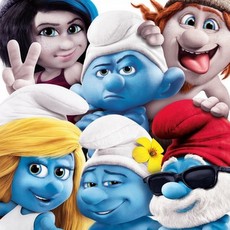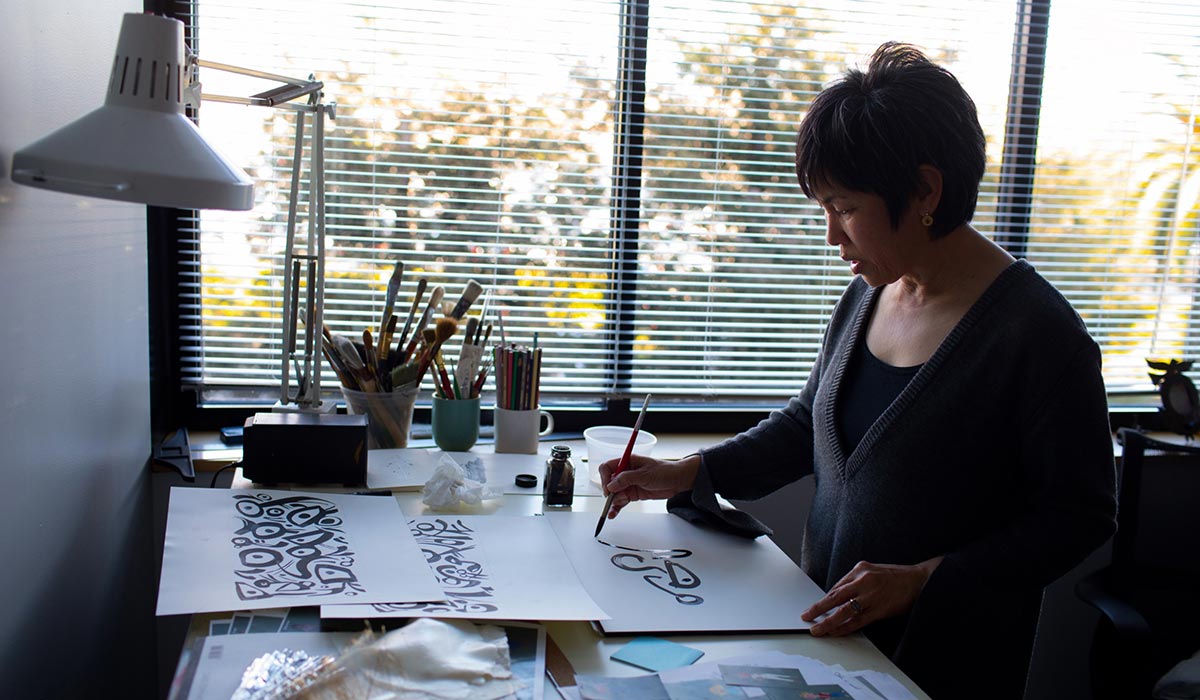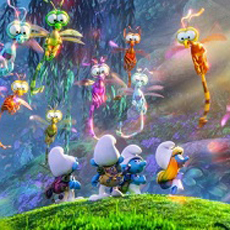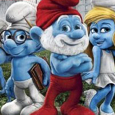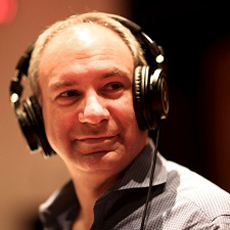 Michael Muir is a senior technical director at Sony Pictures Imageworks, where he most recently completed work on The Smurfs 2.
Michael Muir is a senior technical director at Sony Pictures Imageworks, where he most recently completed work on The Smurfs 2.
Muir began his career as a network specialist at Brigham Young University, graduating with a bachelor’s degree in computer science. Prior to his employment at Imageworks in 2004, he served as a technical director at Industrial Light & Magic, working on such films as Star Wars: Episode II and III, Tim Burton’s Planet of the Apes, Harry Potter & the Chamber of Secrets, and Pirates of the Caribbean: The Curse of the Black Pearl.
For Sony Pictures Animation, his credits include Cloudy with a Chance of Meatballs and Surf’s up. He is currently working on The Amazing Spider-Man II.
Today, Muir takes Animated Views behind the scenes of The Smurfs 2, explaining the role of a technical director and the challenges of working on CG characters versus live-action ones.
Animated Views: The work of a technical director varies from one studio to the other. Can you tell me about your role as one at Sony, including how different it is from your previous experiences?
Michael Muir: Well, like you said, the role of a technical director is different between facilities. Here at Sony, a technical director basically is involved with three things: His primary responsibility is doing the virtual lighting for the CG shots – and that’s pretty consistent across the industry. Where it diverges slightly from maybe ILM – and especially on a project like The Smurfs – is, the technical directors in some cases actually composite their own shots as well. So, we can also be called compositors in a sense. Our technical directors are also involved in the technical aspects of the CG pipeline. That would involve developing the look and sometimes developing the lighting for the movie, creating tools specifically for other lighters to use as well as trying to make the work easier and more efficient as the production moves along. So, that’s where the technical aspect comes from.
The biggest difference, I think, is, when I was a technical director at ILM, I was also involved with developing the look and lighting, and I did some compositing there, but I very rarely composited or did the final composite for a shot. It all depended on the phase of the movie. The technical directors at ILM were also involved with visual effects. At Sony, we have our own department for it.
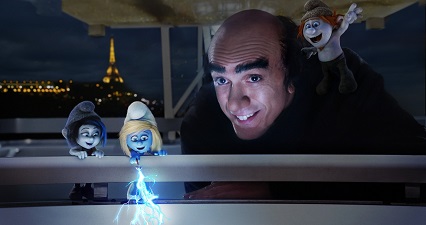
AV: Would you go into detail about your compositing work?
MM: To do compositing, after all the animation and lighting have been been done, the shots are rendered and the images are headed over to a compositor. The compositor then takes those images and composites the final image, whether it’s over a plate – an existing plate that was shot on set – or, if it’s an all-CG shot, they would layer the elements together and add things like edge treatments or depth of field or effects like atmosphere and those types of things. They’re all being rendered by technical directors at various parts of the pipeline. We composite the entire shot from all these elements and make the final image in the movie.
AV: Sounds like an exciting mix of engineering and art!
MM: Yes! That’s actually what kind of drew me to the field and to being a technical director. I like the mix of having a technical background as well as an artistic eye. Growing up, I was known as “the artist.” As I grew older, I also found interest in science and math. So, I kind of developed the two. When I got to college, I knew I wanted to enter this field, so I actually studied both: I took science and math classes as well as art classes. I just really like the mix.
Some technical directors are a little bit stronger as artists; others can be a little bit stronger as technicians. There’s a good mix, I would say, of the two at any facility. Depending on the problems that have to be solved, you go back and forth. One day, I might be completely involved in these artistic things, and then the other day, I might be compositing or programming a technical thing. Most days, I’m doing a little bit of both. That’s something that I enjoy, and I know a lot of other technical directors enjoy it, too.
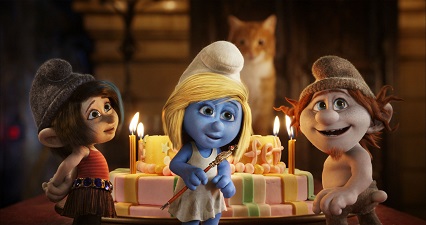
AV: From your perspective, what are the technical improvements of The Smurfs 2?
MM: I would say there are two big evolutions: Though the technology didn’t change much, the biggest change, from our standpoint, was that there are a lot more shots of the Smurfs in The Smurfs 2 than there were in the first movie. Also, we really tried to capture more emotion from the performances of the Smurfs through the mood of the lighting on them. There’s a lot more emotion you can draw from the characters than we had in the first movie. As the film progresses, you really feel it.
The other technical thing that we didn’t have on the first movie is that we had a really remote location we were working with. We had one location in Culver City and another location in Vancouver, and we had the crew spread between the two. We had to learn how to communicate and interact remotely with each other while keeping our team spirit.
AV: In what way did the development of the Sony F65 camera affect your work?
MM: The Sony F65 is a new camera that gives a nice, clean 4K image. Most cameras – especially film cameras – have a lot of grain due to the process of film. The F65 was substantially cleaner than what could be seen in our recent work. The grain was minimal. So, we had to adjust our grain level to that. Also, it was very good at capturing low light, so DP’s didn’t have to add as much light as they had to in the past. That aspect was very good. The F65 captures human skin color very well, too. So, as artists, we had to adjust our color pipeline to deal with the change of the images.

AV: Would you describe a scene in which you used light to capture emotion?
MM: There’s a scene in the third act of the movie where half of the Smurfs have been captured by Gargamel and are placed in the Smurf-a-lator, which extracts the essence of the Smurfs. The Naughties are also part of this group, plus Smurfette and Papa. They all sense the danger that’s ahead of them. Their chance of getting out of the situation is very slim. Smurfette, Vexy and Hackus get very emotional when they realize they’re kind of stuck. We really tried to augment the performance of the animation by keeping the lighting very simple, so that you can read the expressions on their faces. I think it comes across really well in the movie.
AV: What was the most challenging shot for you, in terms of compositing?
MM: There’s a sequence where Gargamel captures Smurfette and has her under a glass vase. That one was difficult because I had to get the reflection of the vase to look authentic without hiding the performance of Smurfette inside the vase. So I used a few tricks to try to keep the performance visible to the audience while still having her look like she was inside of the vase.
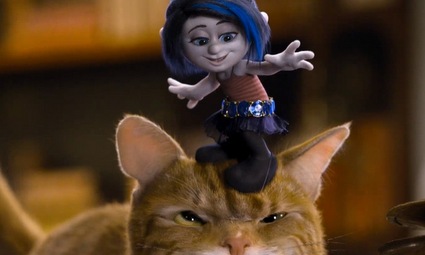
AV: Do you approach imaginary characters like the Smurfs differently than a more photo-realistic character like Azrael?
MM: Yes and no. I mean, what we were trying to achieve with the Smurfs and Azrael was essentially the same goal. We wanted the Smurfs to feel real, except they don’t exist in reality. So, we have a little bit more room in terms of compositing, performance and lighting. With Azrael, we had the opposite problem. We have a cat who is actually there on the shoot that we had to try to match; the director and the producers wanted to get more performance out of the cat than what you can get from a real cat. So, we would augment the performance of the cat occasionally with additional animation and replace his face. Then, other times, we completely replaced the real cat with a beautiful CG one. So, even though we’re coming from opposite ends, where the Smurfs don’t exist in reality and Azreal does, we wind up in the same place. We’re just trying to bring emotion to the film, in getting performances out of these characters.
AV: Is the challenge you face very different on a movie like The Smurfs 2 compared to a live-action film like the upcoming Amazing Spider-Man II?
MM: Every movie brings its own technical hurdle to overcome, and the bar is always raised further. But in many ways, the hurdles are similar. On a movie like The Smurfs 2, it’s all about the performance and getting the animation to read on screen. Some people say that it’s the same in live-action, but there’s also an additional aspect to live-action: trying to keep everything in reality. We tried to do that with The Smurfs 2 as well – but, again, Smurfs are imaginary characters, so we had a little leeway to play with!
Our smurfest thanks to Michael Muir, Olivier Mouroux and James Adams!



